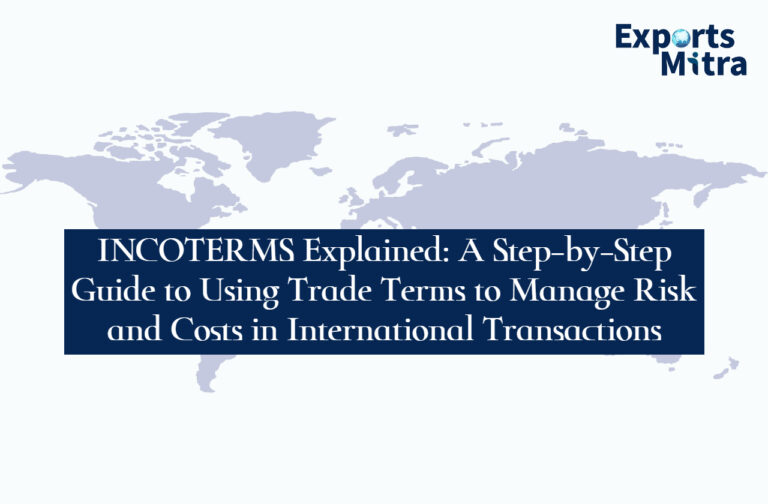Introduction
India’s diverse cultural and economic landscape offers a unique opportunity for region-specific development. The “One District One Product” (ODOP) and “Districts as Export Hubs” (DEH) initiatives aim to harness this potential by focusing on district-level specialization to boost exports. This strategy not only aims to preserve local heritage but also drives economic growth by tapping into the unique resources and skills inherent in each district. This article delves into the comprehensive analysis provided in the study, highlighting key findings, challenges, and opportunities for exporters, banks, financial institutions, and the business community.
Overview of ODOP-DEH Initiative
The ODOP-DEH initiative, a collaborative effort between the Central and State governments, targets the enhancement of specific products and crafts in designated districts to promote regional economic development. The initiative is grounded in the recognition of India’s vast cultural diversity, which is mirrored in the unique skills, traditions, and resources found across various regions. By focusing on these unique products, the initiative aims to unlock economic opportunities and drive growth at the district level.
Key Findings from the Study
The study evaluated 59 districts across 20 states, revealing significant untapped export potential. By analyzing data beyond predetermined ODOP categories, the study provided fresh insights into global demand for products from these districts. This detailed analysis underscored the immense opportunities waiting to be harnessed for India’s economic advancement.
District-Level Export Analysis
India’s exports reached a record high of USD 451 billion in FY 2023, marking a significant increase from USD 315 billion a decade earlier. Despite global economic headwinds, India maintained an average annual export growth rate of 5.2% over the past decade. Notably, petroleum products, pearls, precious stones, drug formulations, iron and steel, and telecom instruments were among the top exported commodities, accounting for 37% of total exports in FY 2023.
The concentration of exports is significant, with the top five states contributing to nearly 70% of India’s exports in FY 2023. Gujarat and Maharashtra alone accounted for almost half of these exports, highlighting the dominance of certain states in the country’s export landscape.
Government Efforts and Interventions
The ODOP-DEH initiative is supported by various schemes and efforts from both Central and State governments. Several states have aligned their development strategies with the ODOP-DEH vision, ensuring efficient implementation and creating a conducive environment for investment and business expansion. These coordinated efforts are crucial for the initiative’s success, as they provide the necessary support and infrastructure for local products to thrive on both national and international stages.
Exim Bank’s Role and Initiatives
Exim Bank plays a pivotal role in realizing the vision of ODOP-DEH through its Grassroots Initiatives for Development (GRID) program. The bank’s approach begins with identifying potential districts and conducting research and data analysis to shortlist those with significant export potential. By engaging with district authorities, product associations, and industry representatives, Exim Bank builds partnerships and ensures effective implementation of the ODOP-DEH initiatives.
Throughout the implementation of these support programs, Exim Bank establishes a monitoring and evaluation system to track progress continuously. This ongoing assessment helps in adapting strategies and interventions as required, ensuring that the initiatives remain relevant and effective in addressing the unique challenges faced by each district.
New Foreign Trade Policy 2023
The new Foreign Trade Policy (FTP) launched in March 2023 places special emphasis on DEH. Aiming to achieve USD 2 trillion in exports by 2030, the policy outlines a “bottom-up approach,” identifying approximately 100 districts across the country to transform them into export hubs. This strategic approach aims to empower rural India and the informal sector by fostering economic growth, capacity-building, and market access for diverse products and services.
Case Studies and International Insights
The study also draws valuable lessons from successful district-level policies in countries like Japan, Thailand, Mexico, the Philippines, and Ghana. These case studies highlight the positive outcomes of focusing on local products and crafts, emphasizing their unique cultural and economic significance. By learning from these examples, India can effectively implement ODOP and drive regional development.
Challenges and Recommendations
Despite the promising prospects, several challenges need to be addressed to realize the full potential of the ODOP-DEH initiative. Key challenges include:
- Infrastructure Deficiencies: Many districts lack the necessary infrastructure to support large-scale production and export activities. Improvements in transportation, logistics, and storage facilities are crucial.
- Skill Development: Enhancing the skills of local artisans and workers through targeted training programs is essential to improve product quality and competitiveness.
- Market Linkages: Establishing strong market linkages both domestically and internationally is vital for the success of district-specific products. Efforts should focus on creating robust supply chains and expanding market access.
- Technological Upgrades: Adopting modern technologies in production processes can significantly enhance productivity and product quality. Investment in technology upgrades is necessary to keep pace with global standards.
- Financial Support: Providing adequate financial support to local businesses and artisans is critical. Banks and financial institutions should develop tailored financial products and services to meet the unique needs of these stakeholders.
Opportunities for Exporters, Banks, Financial Institutions, and the Business Community
The ODOP-DEH initiative presents numerous opportunities for exporters, banks, financial institutions, and the business community:
- Exporters: By focusing on district-specific products, exporters can tap into new markets and expand their product portfolios. The initiative provides a platform to showcase unique Indian products globally, enhancing export competitiveness.
- Banks and Financial Institutions: These entities can play a crucial role by offering customized financial solutions to support local businesses and artisans. This includes providing working capital, investment loans, and export financing.
- Business Community: Businesses can leverage the ODOP-DEH initiative to source unique products and raw materials, fostering innovation and differentiation in their offerings. Collaborations and partnerships with local producers can drive mutual growth and success.
Conclusion
The ODOP-DEH initiative is a transformative approach to regional economic development in India. By focusing on district-level specialization, the initiative aims to preserve cultural heritage while driving economic growth. The comprehensive analysis provided in the study highlights significant opportunities and challenges, offering valuable insights for exporters, banks, financial institutions, and the business community. With coordinated efforts and strategic interventions, the ODOP-DEH initiative has the potential to propel India’s districts towards becoming vibrant centers of economic activity and global competitiveness.
[download_after_email id=”2808″]






